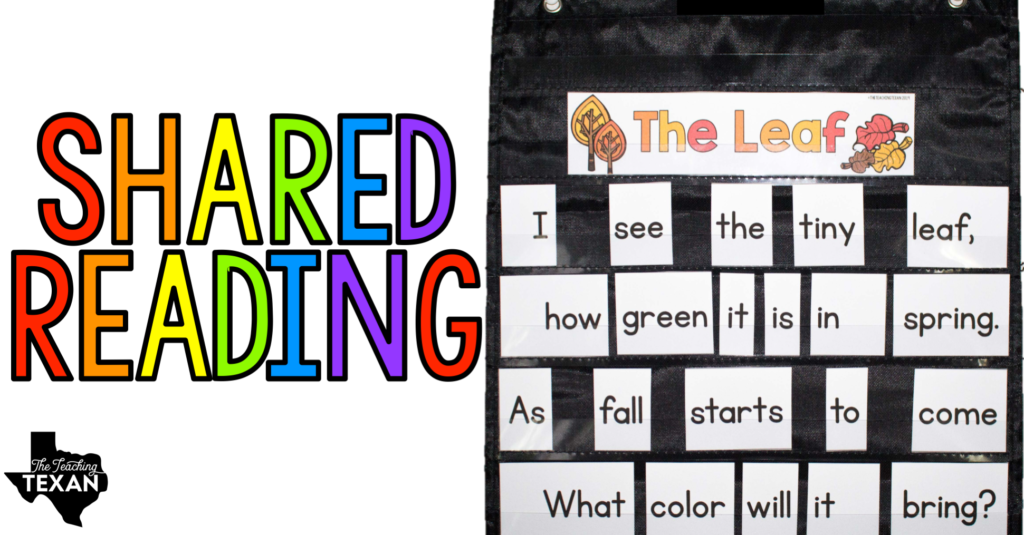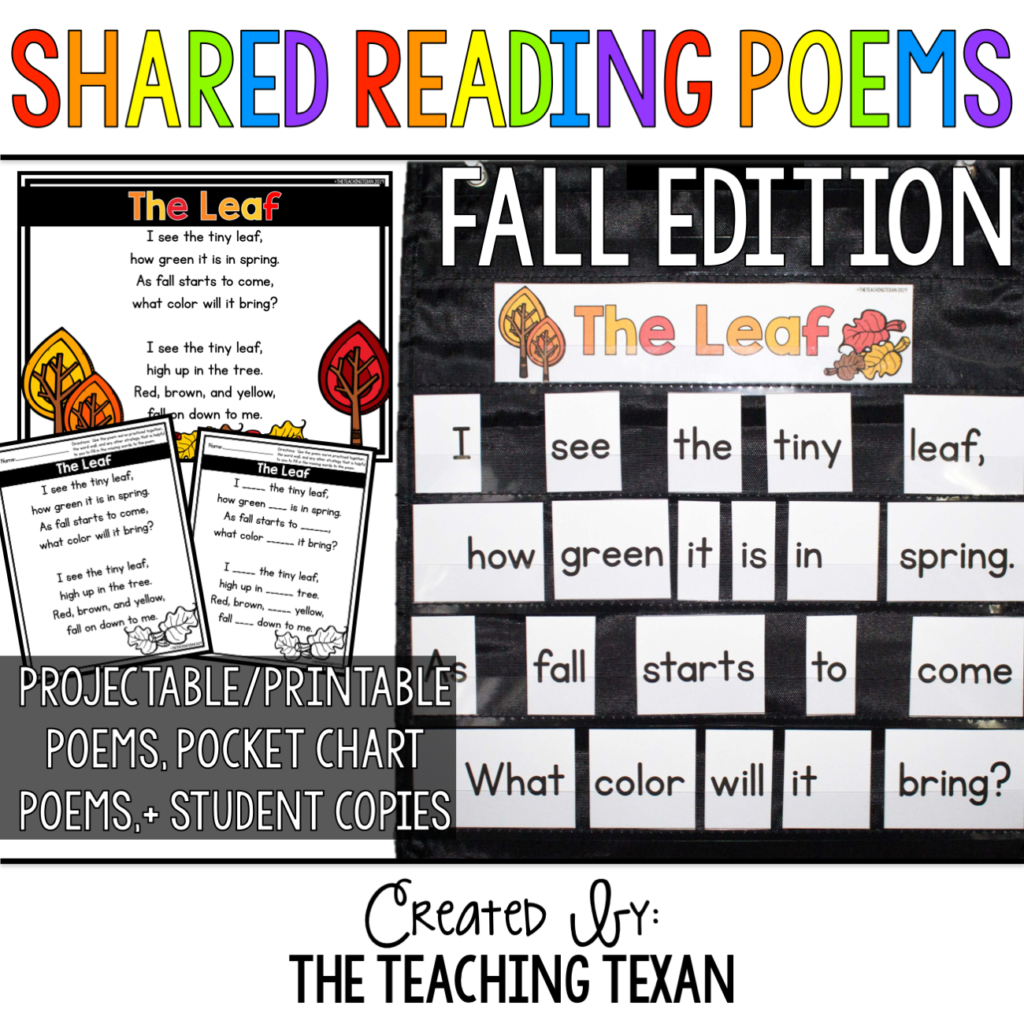What is Shared Reading?
An essential pillar of balanced literacy in elementary is shared reading. And yet it’s something teachers (even great teachers) often overlook in our frenzied effort to get “everything” done.
If you’re one of those excellent educators who’s never had a chance to incorporate shared reading into your curriculum, today’s your lucky day. Fortunately for us all, it’s extremely easy to implement. Shared reading is a chance to practice reading skills as a WHOLE GROUP. It’s a wonderful opportunity for every student to get reading practice at once, in a choral fashion, so that their mistakes don’t stick out, making them feel self conscious. It boosts confidence and stretches students to new levels of accomplishment. This large group time is also perfect for linking to mini-lessons in guided reading, and great for practicing strategies for word solving, re-reading, decoding and monitoring comprehension.

So…what is Shared Reading?
Glad you asked! Shared reading is pretty much exactly what it sounds like — students sharing a reading experience with the same text. This can be done as a whole class activity, in smaller groups, or even in pairs depending on what works best for your schedule and kiddos. The most important elements are that (a) students read aloud and (b) they don’t read alone.
As a whole class activity, everyone should have access to a copy of the same text (you may have partners share a text) and read aloud chorally, like reciting a poem. It’s imperative that students are engaged in reading the text with you, otherwise this would fall under the category of a read aloud.
Shared Reading FAQ:
- How do you choose texts for shared reading? Does it have to be a whole book?
Absolutely does NOT have to be a whole book. In fact, I’ve found poems to be a wonderful way to incorporate shared reading. I’ve just created an awesome package for y’all to use poetry as a form of shared reading complete with projections for read-a-longs and student copies for their poetry notebooks!
I love to use books from Reading A-Z to project for this. If your classroom is equipped with a projector this can be an easy, no fuss way to give everyone access to the text without having to print out copies or do too much prep work ahead of time — y’all know how much I love to cut down your prep-time! I also love to choose books that relate to current themes, units, events, or seasons for relevance. This helps tie in our literacy with other things we’re learning in the classroom.
And let’s not forget about poetry. Having a weekly poem is the PERFECT way to incorporate shared reading. We read through our poem the first day looking for familiar sight words (this day is pretty teacher heavy) and discussing meaning. As the students become more familiar with the poem throughout the week we discuss rhyming words, rhythm, etc.
I also love putting them in a pocket chart so they can become a center where students mix the poem up then rebuild it. After they rebuild the poem they then record the missing words on a student handout. It’s a win-win of incorporating so many skills at once! You can check out my Fall Shared Reading Poems by clicking the image below!

Whatever you choose, it’s important to select texts that are at the instructional level for the majority of your kiddos. This means some kiddos will be stretched a bit and some will be reading down a level or two, but this isn’t a negative at all! You’ll be surprised to see that students at lower instructional levels will rise to the occasion, and those above this level will serve as fantastic peer-models while still gaining fluency practice.
- How do you plan for shared reading?
Instead of reinventing the wheel, I’m going to point you to one of the best strategy guides I’ve found for Shared Reading thus far — ReadWriteThink.org has a study by Jan Miller Burkins that breaks it down brilliantly. She tackles important things to consider before, during and after your shared reading time.
- How often should you incorporate shared reading?
As often as you can! It could even be a daily routine way to bring your class into literacy time. Or a weekly wrap up “Friday Poetry Circle” where everyone also learns to snap like a real poetry session — practicing those fine motor skills all the time too!
- What are the benefits really? I already have so much literacy to plan for!
The benefits are ENORMOUS and you’ll start to notice quickly once this becomes a regular part of your students’ routine. Your kiddos will get more opportunities to practice sight word or high frequency word recognition, as well as fluency practice. Plus, shared reading time allows all students to feel successful as readers. Shared reading also allows time for students to practice reading texts with appropriate tone and inflection. Reading aloud in a group is a completely different skill than reading silently. It even leads into public speaking skills later in life. Plus, working as a whole group allows you, the teacher to model inflection and tone, then students are given the chance to practice those skills immediately as a group.
Another huge benefit you’ll see right away (within just a couple of weeks) is the effects shared reading has on your guided reading sessions with students. After group experience gaining confidence reading together, students will gain further INDEPENDENT practice with these strategies in smaller groups or on one-on-one mini-lessons with you.
(For more on guided reading and how to get started — head here!)
Incorporating shared reading actually cuts down on your front-loading time teaching guided reading later. It maximizes your time while building student skills — a win/win in my book! Need teaching points for shared reading? Check out 5 of my favorite on this blog post!
However and whenever you decide to incorporate shared reading into your classroom, you’ll be glad you did! I can’t wait to hear your success stories!
